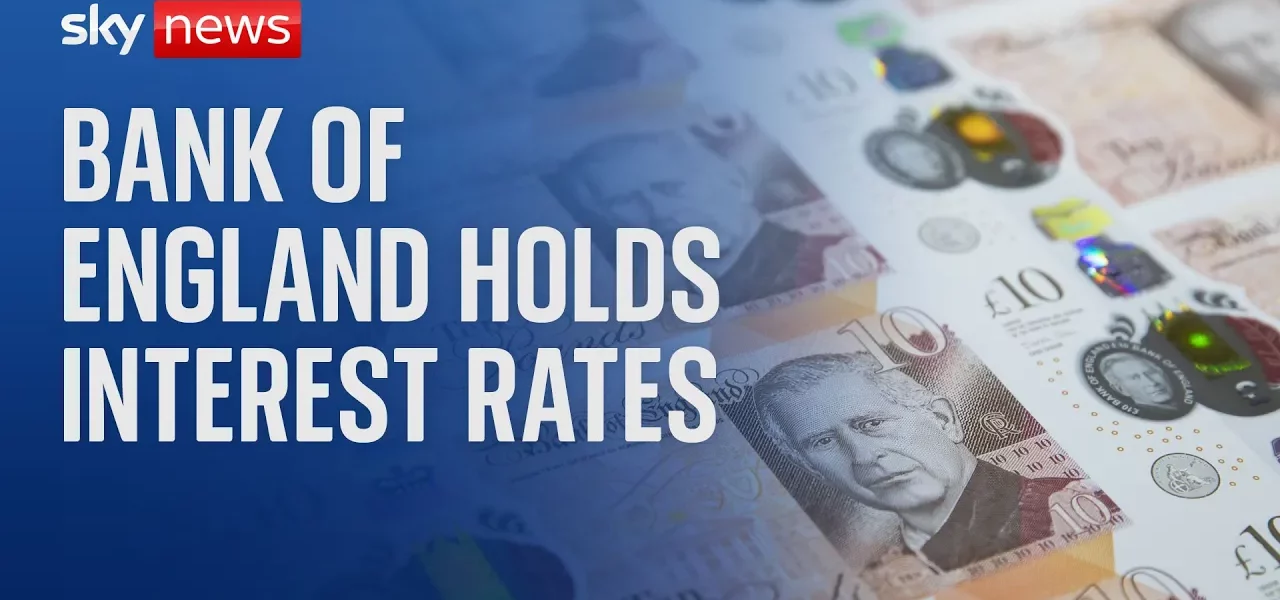Bank of England Keeps Interest Rates on Hold at 5%

In a crucial decision that impacts the UK economy, the Bank of England has opted to maintain the interest rates at 5%. This article delves into the implications of this decision, the economic context surrounding it, and future expectations in the realm of monetary policy.
Introduction
The Bank of England’s recent decision to hold interest rates steady at 5% has sparked discussions among economists and financial analysts alike. This move aligns with the expectations of many economists who anticipated that the Monetary Policy Committee (MPC) would refrain from making any sudden changes at this juncture. With the next MPC meeting set for November, all eyes are now on whether the Bank will implement further cuts to stimulate the economy, amidst signs of strain from previous interest rate hikes.
Understanding the Current Interest Rate Decision
On the surface, the decision to keep interest rates at 5% may seem straightforward, but it reflects a complex interplay of economic indicators and strategic considerations. The MPC’s unanimous vote of 8-1 indicates a strong consensus on the need for stability at this time.
Historical Context of Interest Rates
To fully grasp the significance of this decision, it is essential to look back at the trends in interest rates over the past few years:
- Interest rates were slashed to near-zero levels in response to the financial crisis.
- In August, the Bank initiated its first rate cut since these lows, reducing rates from 5.25% to 5%.
- The gradual approach to rate cuts reflects a cautious stance in navigating economic recovery.
The Implications of Holding Rates Steady
By maintaining the interest rate at 5%, the Bank of England aims to foster a stable economic environment. However, this decision carries both positive and negative implications for various sectors.
Positive Implications for Borrowers
For individuals and businesses with loans, keeping the interest rate steady helps to alleviate some of the financial pressure that higher rates can impose. Key benefits include:
- Stability in monthly mortgage payments.
- Encouragement for consumer spending, which is vital for economic growth.
Challenges for the Economy
Despite these benefits, there are challenges ahead. The economy has shown signs of strain, particularly in the labor market, which may prompt the Bank to reconsider its strategy:
- Weak GDP growth in recent quarters raises concerns about economic vitality.
- Unemployment figures suggest that higher rates are affecting job stability.
- Continued high rates may hinder growth and lead to increased borrowing costs.
Looking Ahead: What to Expect in November
The next meeting of the MPC in November is critical, as it will likely set the stage for future interest rate cuts. Analysts are speculating on several outcomes:
Potential Rate Cuts
Many economists predict that a cut to 4.75% may be on the horizon, depending on economic indicators leading up to the meeting. Factors influencing this decision could include:
- Performance of the UK economy in the lead-up to November.
- Indicators of inflation and consumer spending.
- Global economic conditions that may affect the UK economy.
Impacts of Rate Cuts
If the Bank does decide to cut rates, the implications could be significant:
- Increased borrowing would stimulate consumer spending.
- Potential improvement in the housing market as mortgage costs decrease.
- Support for businesses in managing operational costs amidst economic uncertainty.
Conclusion
The Bank of England’s decision to hold interest rates at 5% reflects a careful consideration of the current economic landscape. While this decision provides some relief to borrowers, it also highlights ongoing challenges within the economy. As we approach the November meeting, it remains crucial for stakeholders to monitor economic indicators closely. Whether the Bank will proceed with a rate cut will depend on various factors, including economic performance and labor market conditions. For more insights and updates on monetary policy, explore our related articles on economic trends and financial strategies.
“`




